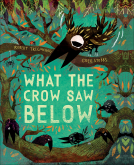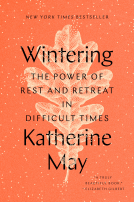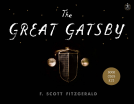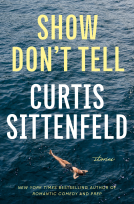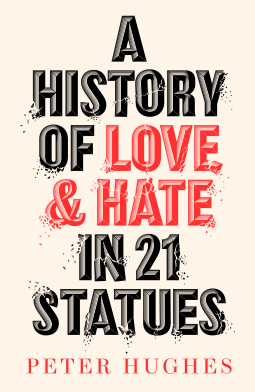
A History of Love and Hate in 21 Statues
by Peter Hughes
This title was previously available on NetGalley and is now archived.
Send NetGalley books directly to your Kindle or Kindle app
1
To read on a Kindle or Kindle app, please add kindle@netgalley.com as an approved email address to receive files in your Amazon account. Click here for step-by-step instructions.
2
Also find your Kindle email address within your Amazon account, and enter it here.
Pub Date Oct 12 2021 | Archive Date Nov 16 2021
Talking about this book? Use #AHistoryofLoveandHatein21Statues #NetGalley. More hashtag tips!
Description
Confederate soldiers hacked to pieces. A British slave trader dumped in the river. An Aboriginal warrior twice beheaded. A Chinese philosopher consumed by fire. A Greek goddess left to rot in the desert…
Statues stand as markers of collective memory connecting us to a shared sense of belonging. When societies fracture into warring tribes, we convince ourselves that the past is irredeemably evil. So, we tear down our statues. But what begins with the destruction of statues, ends with the killing of people.
This remarkable book is a compelling history of love and hate spanning every continent, religion and era, told through the destruction of 21 statues. Peter Hughes’ original approach, blending philosophy, psychology and history, explores how these symbols of our identity give us more than an understanding of our past. In the wars that rage around them, they may also hold the key to our future.
The 21 statues are Hatshepsut (Ancient Egypt), Nero (Suffolk, UK), Athena (Syria), Buddhas of Bamiyan (Afghanistan), Hecate (Constantinople), Our Lady of Caversham (near Reading, UK), Huitzilopochtli (Mexico), Confucius (China), Louis XV (France), Mendelssohn (Germany), The Confederate Monument (US), Sir John A. Macdonald (Canada), Christopher Columbus (Venezuela), Edward Colston (Bristol, UK), Cecil Rhodes (South Africa), George Washington (US), Stalin (Hungary), Yagan (Australia), Saddam Hussein (Iraq), B. R. Ambedkar (India) and Frederick Douglass (US).
The book includes a black and white illustration of each statue and an illustrated map showing their geographical location.
A History of Love and Hate in 21 Statues is a profound and necessary meditation on identity which resonates powerfully today as statues tumble around the world.
Available Editions
| EDITION | Other Format |
| ISBN | 9780711266124 |
| PRICE | $26.00 (USD) |
| PAGES | 336 |
Featured Reviews
 Reviewer 703837
Reviewer 703837
The title explains the book well. We learn of the stories behind 21 statues that were either controversial when they were put up, or have since become controversial. The statues seem to perpetuate the controversy becoming a lightning rod for clashing factions and often being attacked, desecrated or toppled themselves. Sometimes the controversy is immediate and sometimes it flares up after years of forgetting and benign neglect. There is a lot of discussion of the nature and power of this violence against statues.
The stories range from the ancient world to the present, but most are fairly recent. The narrative explanations are clearly written and accessible - informative without being fussy. It is a timely topic, following a sudden wave of awareness about the kinds of statued subjects that have been peopling our public places. The ideas of hate and love are explored in ways that manage to be both easy to follow and yet interesting.
This issue of how statues serve as a kind of living presence is discussed in the first story (Hatshepsut from ancient Egypt, whose gender made her a likely target) and directly linked to our contemporary experience. The balance of stories and thoughtful reflections (and between original history and the statues’ afterlives) is neatly managed and the book is pleasantly lively and engaging to read.
 John L, Reviewer
John L, Reviewer
This very erudite book does exactly what you'd expect it to do, given the black history of this current decade. Statues are slightly peculiar things – one to the king rediscovered and reinterred just years ago in my home city still gets gifts of his emblematic white rose every now and again, even when the statue cannot be aware of that and his grave is just yards away. But giving flowers to a lump of metal in honour of the person represented by said lump is little when it comes to the vengeance, bigotry, anger and self-appointed rightness and righteousness of those who demolish them. From frenzied ISIS 'warriors' to hacked-off hoodlums, all are here, and we learn of the statues, the stories behind them, and the stories behind their demolition, defacement and displacement.
I did fear that, after a suitably concise yet classics-quoting introduction, and a couple of these essays, the book might seem fairly repetitive - there are clearly a few lessons to be had from the acts of anti-statue violence of our day and age, and I felt if we had to have them all represented each and every time, for each and every statue, the book would be a labour. But the benefits of such an erudite author is that the story of each statue can lead to different thoughts, a different presentation of a different moral, each time. Hence a head of Nero is the impetus for a history lesson into the man and his tutor, the stoic Seneca, and we see what his philosophy tells us about the issue, only for Athena being demolished (twice) to show us what her standpoint in "The Oresteia" should have told the iconoclasts.
And anyway, the thoughts after each and every statue is demolished are obviously going to be different, for every one is different. It wasn't just their size, age, prestige and the art involved that made us all despair when the Buddhas of Bamiyan were blown up, but what about when the subject is a little less benign, and possibly even contentious? Slave-owners and the Confederacy are possibly harder to memorialise.
Generally, the author is clear that a lot of this history wiping is a bad thing. Loving your enemy is one major step beyond knowing your enemy, and neither can happen if some people demand they are the "us" who must pull down the "them". I am surprised, as a result, the book barely mentions anything else of the heinous cancel culture this vandalism is pretty much in bed with, or the pernicious white-washing of history that leaves people leaving university thinking only white people owned slaves. Instead we get the likes of QAnon and their childish secularism. But for every statue that comes down, and leaves a cloud of dust (and some weed-on fragments to flog on ebay), there is also a statue that comes down and changes nothing. Saddam Hussein toppled to a crowd of dozens, we read – and years later he still had an international poetry competition run in his name, and sold with his mugshot front and centre on the posters I saw in Jordan.
What plinth this sterling academic work deserves is a final question to raise. It clearly covers a lot of history, but in having so many recent examples of statuary demolition to cover, in a book that is chronological in the order they were raised, this clearly talks of modern times, and society. If this were sold on a sociology basis, then, I don't think its lessons would be one bit awry. It is an academic work, methinks, a little too serious for the average browser (well, it lost this average one a couple of times), but it clearly deserves high praise. A strong four stars is my opening donation.
